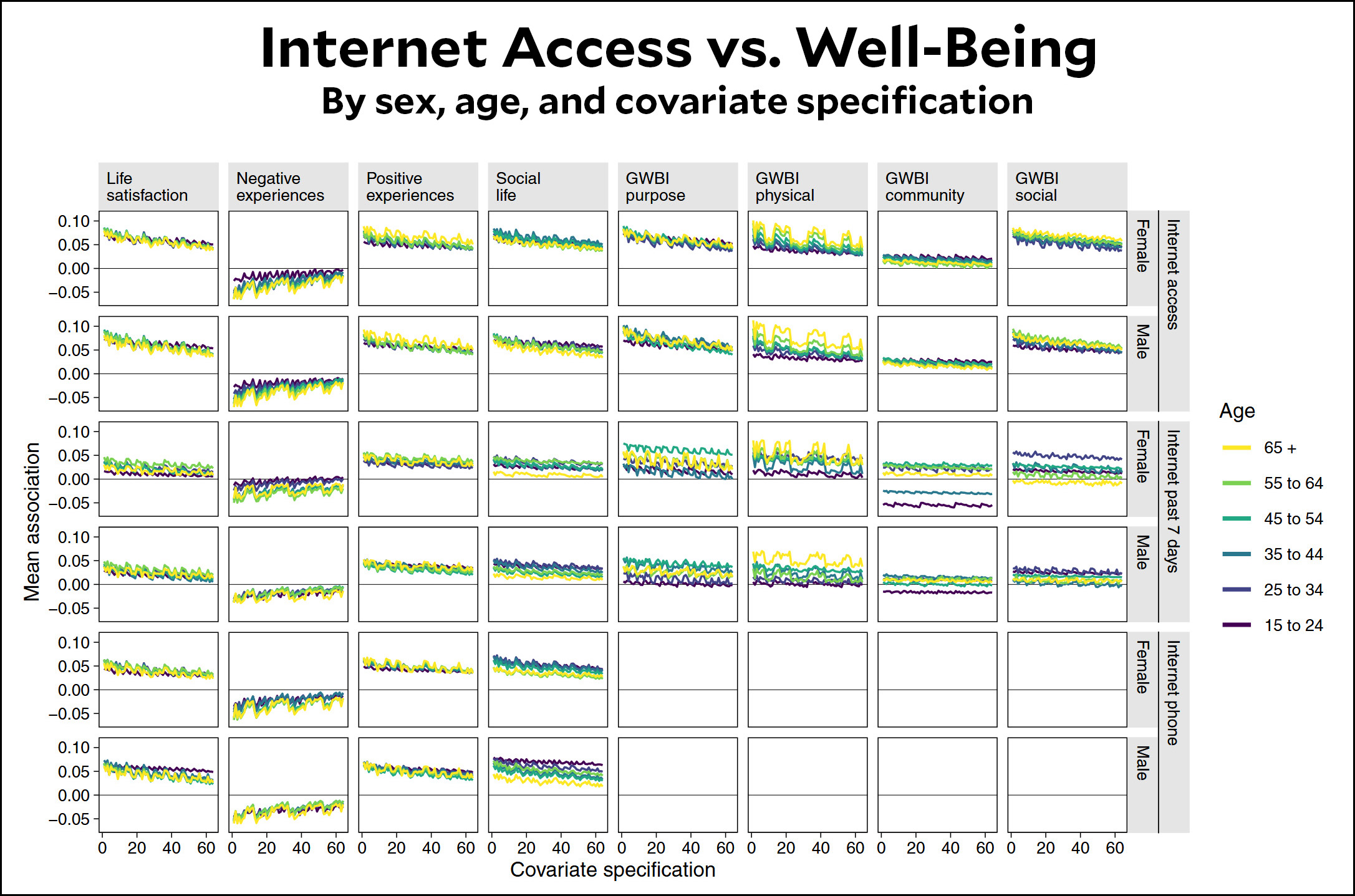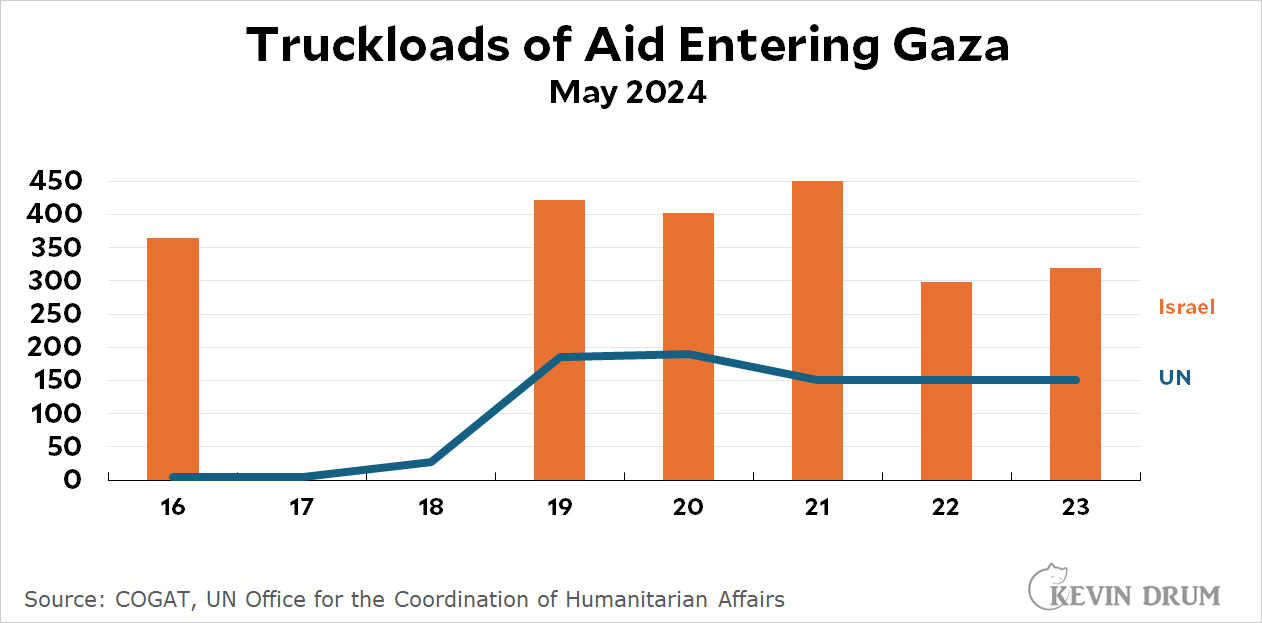The Wall Street Journal points to a fascinating study today. Three researchers took a look at recent inflation expectations among Democrats and Republicans. Here it is:
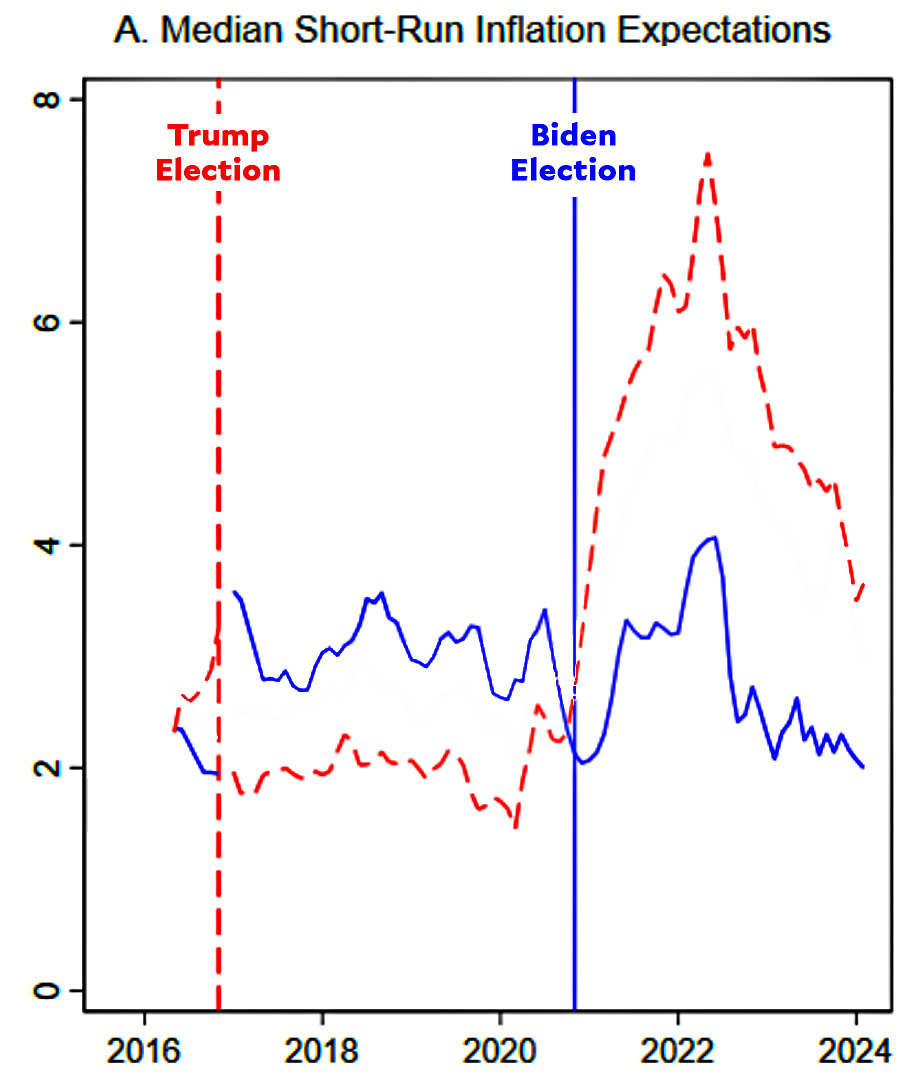 Democrats maintained relatively stable inflation expectations the entire time. By contrast, Republican inflation expectations skyrocketed literally on the day Joe Biden won the 2020 election—long before actual inflation appeared.
Democrats maintained relatively stable inflation expectations the entire time. By contrast, Republican inflation expectations skyrocketed literally on the day Joe Biden won the 2020 election—long before actual inflation appeared.
But that's not all. The authors say that these inflationary expectations actually turned into inflation:
We find strong positive and significant effects of inflation expectations on inflation itself.... A one percentage-point increase in 1-year or 5-year inflation expectations lead to a 1.3 or 2.3 percentage point increase in inflation, respectively.
The Journal decided to check this out, and their conclusion is that it seems to be true:
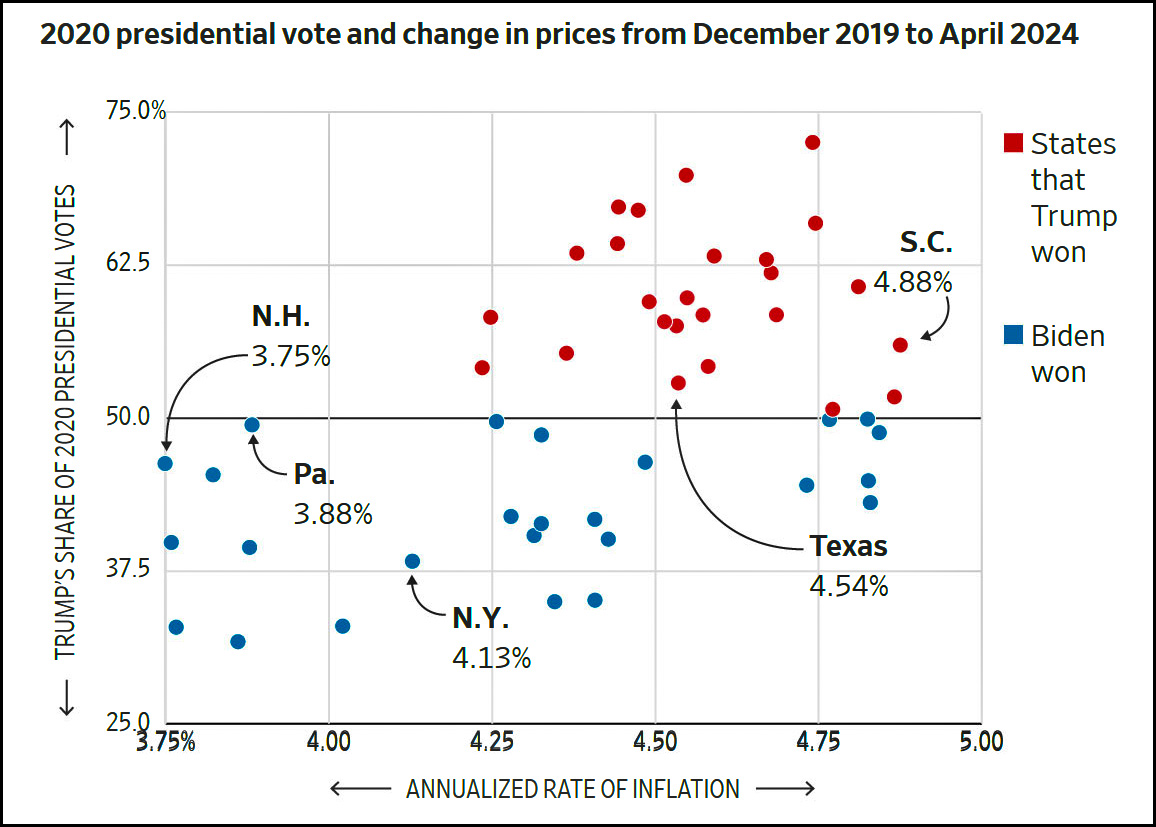 Every state that voted Republican has high inflation. That's fairly remarkable—though I'd feel more confident in the result if I could see this same analysis for previous elections.
Every state that voted Republican has high inflation. That's fairly remarkable—though I'd feel more confident in the result if I could see this same analysis for previous elections.
If this study is correct, it means that a great deal of our recent inflationary surge was literally due to Republican hysteria over the election of Joe Biden. In fact, the authors calculate what actual inflation would have been if everyone had instead acted like Democrats:
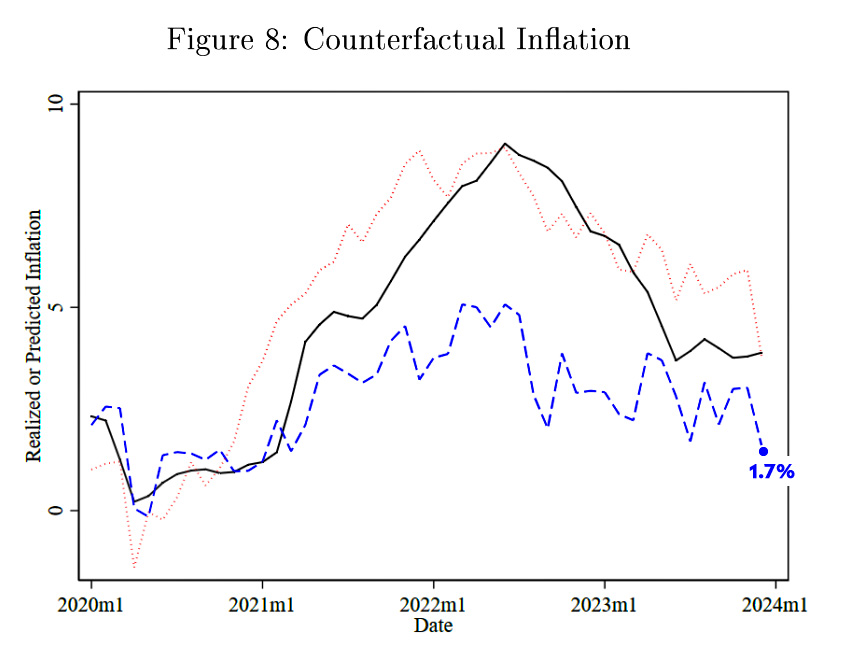 They figure that inflation would have topped out around 5% and would currently be at 1.7%.
They figure that inflation would have topped out around 5% and would currently be at 1.7%.
I'm not sure what to think about this. The results seem too big to be true, and the authors take some shortcuts that might be iffy. That said, I don't have the econometric chops to evaluate the paper properly. I'd sure like someone else to do it, though. If the paper is right, we're paying a huge price for the Trump/Fox-induced economic panic that continues to infest Republican voters.
 Give or take a bit, just under 100 tenure track positions were hired in American History in 2022. The total number of non-white American History doctorates in 2022 was 55. This suggests there's still plenty of opportunity for white folks even if every single non-white PhD stayed in academia and got hired—which is distinctly unlikely. If I had to take a horseback guess, I'd say that roughly 60-70% of American History hires are white people, split about evenly between men and women.
Give or take a bit, just under 100 tenure track positions were hired in American History in 2022. The total number of non-white American History doctorates in 2022 was 55. This suggests there's still plenty of opportunity for white folks even if every single non-white PhD stayed in academia and got hired—which is distinctly unlikely. If I had to take a horseback guess, I'd say that roughly 60-70% of American History hires are white people, split about evenly between men and women.







